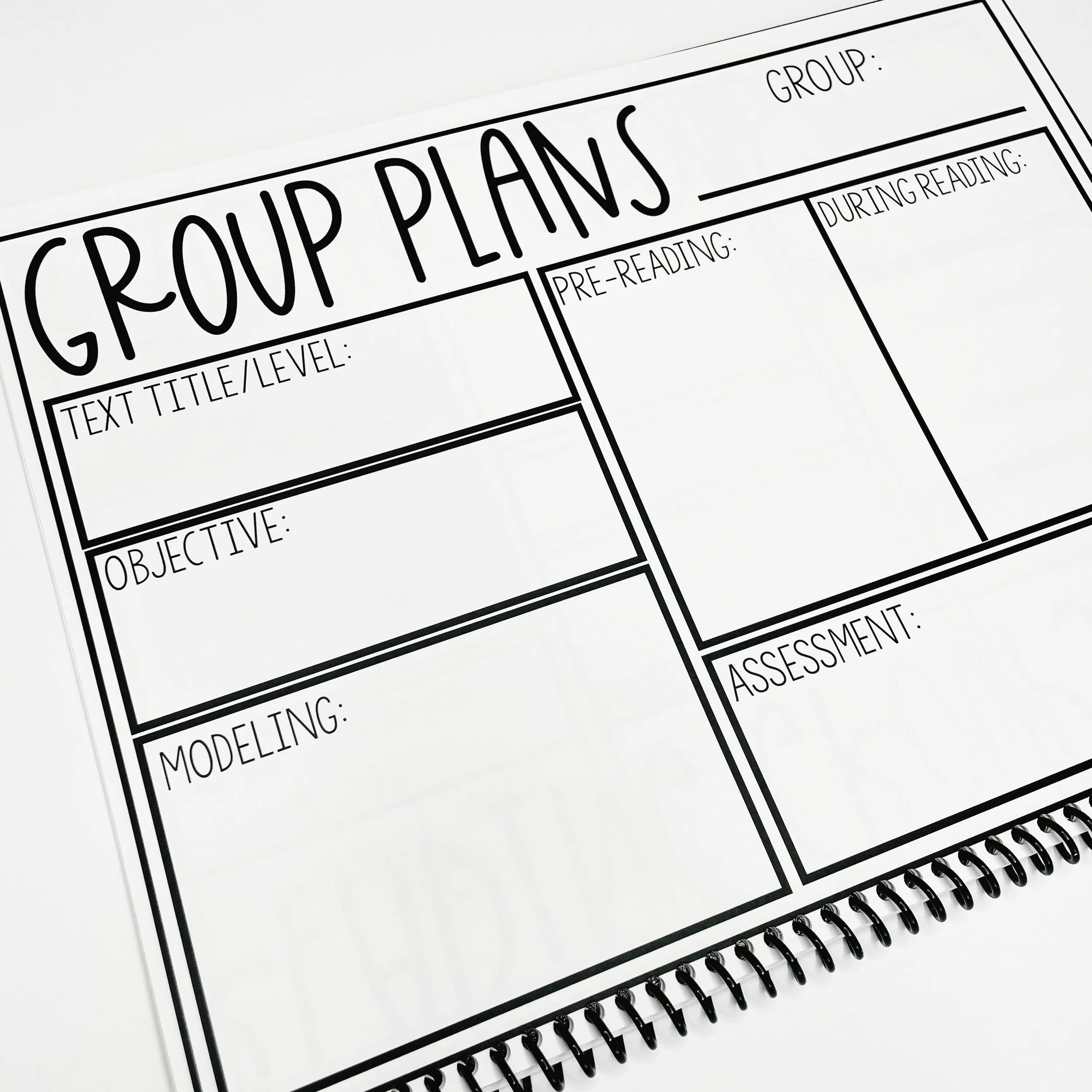How to Organize Student Reading Data
Back to school time is all about getting to know our students. We are getting to know them as people, getting to know their families, their interests, and more. But as teachers, one of the most important ways we are getting to know our students is who they are as learners.
We learn about our students’ academic achievement, weak spots, and learning styles through data collection. I don’t know about you all, but my back-to-school weeks are always filled with plenty of assessments!
After gathering all of that data, how do you organize it? How do you use it? As always, I have taken something that used to be complicated for me and broken it down into easy-to-follow steps. Keep reading to learn how I organize student data and form small groups throughout the year!
Collecting Student Data
The first thing you need to do before you can organize and actually use data is collect it. There may be a half a dozen assessments you need to administer in the first two weeks of school. It always feels like a lot no matter how many years of teaching you have under your belt. Kick-off the year by teaching all of your center routines and expectations so your students can move through your room independently while you administer assessments at your small group table.
If your school does not have specific, mandated assessments, the skills I would recommend learning about in 2nd-3rd grade are:
-Reading Level
-Fluency
-Phonics Gaps (if reading level and fluency scores indicate that the student struggles with decoding)
-Developmental spelling level
-Writing ability (gather a sample to informally assess handwriting and speed)
Organizing Student Data
Step One: List out all of your student data, by test. I like to list things from lowest score to highest score, but do what’s easiest for you.
Step Two: Group students who scored similarly. Students who scored well below grade level in multiple areas will likely need to be in the same reading group. Students who scored well above grade level will also likely be in the same reading group.
**Typically in second grade, I always had a few students well below grade level, a handful above, and a huge chunk right on level. For that giant group in the middle, look at the skills that it looks like they will need the most help with. Was it fluency? Comprehension? Break those students into skill groups so you can best meet their needs without overwhelming yourself.
Step Three: For the lowest-achieving and highest-achieving students, take a close look at their individual data and look for patterns. Did most of your struggling readers have similar phonics gaps? How far back into different phonics patterns will you need to go to reach everyone?
Are all of your high-achieving students reading fluently? How is their comprehension? If they aced every assessment easily, you will likely need to push this group with more complex texts throughout the year, as well as critical thinking reading tasks.
Based on the skills that you assign each group, name them. For example, you may have a low-achieving reading group that will be working on phonics. I named my lowest group “Phonics, starting at r controlled vowels “. For my on-level students, I named the groups “fluency 1 “, fluency 2”, and “comprehension”.
You obviously will not reveal these names to the students. This is just for you to look quickly at a glance while you’re planning and remember what sort of materials you need to pull.
I collect all of this information in a single data planner. That makes it easy for me to keep everything in one place whether I am teaching a small group, having a parent conference, going to a data team meeting, and more. I love to have all of my data neatly organized and easily accessible.
Using Student Data
Now that your students are grouped and your data is organized, it’s time to teach!
Use what you learned about the reading level and skill needs to pull texts and materials for your students.
In the same small group planner, I also keep forms that allow me to jot down small group plans, take running records, keep observational notes, and more.
Every other Friday, I comb through all of the notes I’ve taken in each group and look for patterns. Did one student in the low achieving group, and a student fluency 1 score very similarly all week? Did two students struggle with the same skill in a group, while the others took off? Did an entire group seem to find one of the lessons very easy?
Noticing these patterns will help you make quick, data-informed decisions when it is time to switch small groups. I don’t recommend switching small groups but every 6 to 9 weeks. However, noticing the patterns that are emerging every two weeks will give you a good idea of what direction your students are headed. It helps you adjust your teaching over time. It’s amazing the story that the data will tell you if you are willing to look carefully on a regular basis!
And there you have it! The steps that I take to gather, organize, and teach with my student data all year long. You can grab my small group planner here and organize your own data for your students this year.
And, if you want to learn my super simple method for planning reading groups, check out this blog post!




